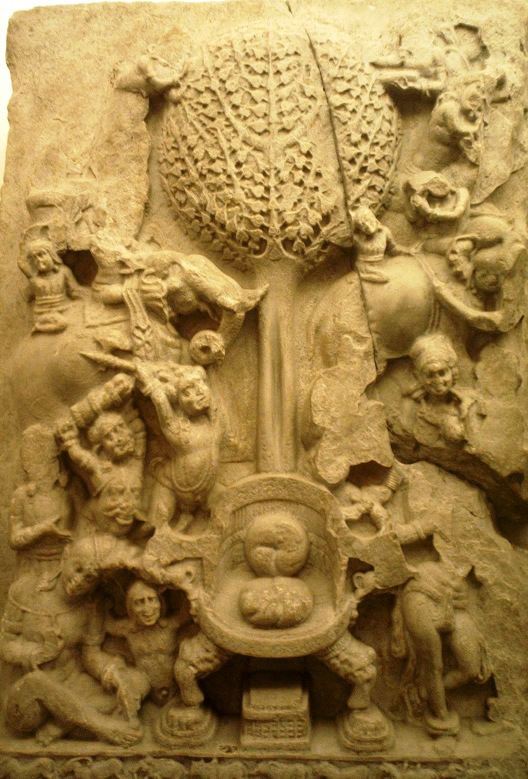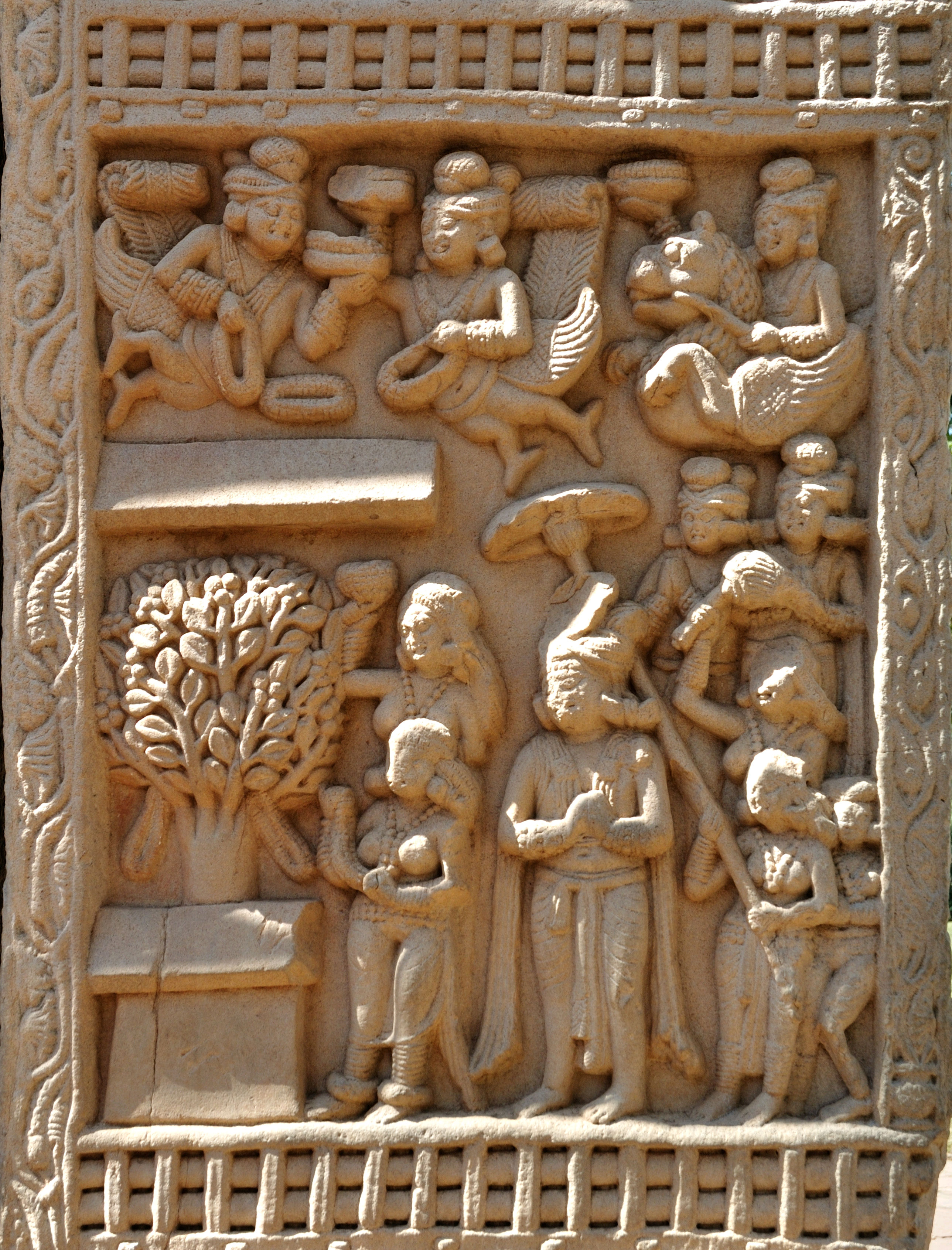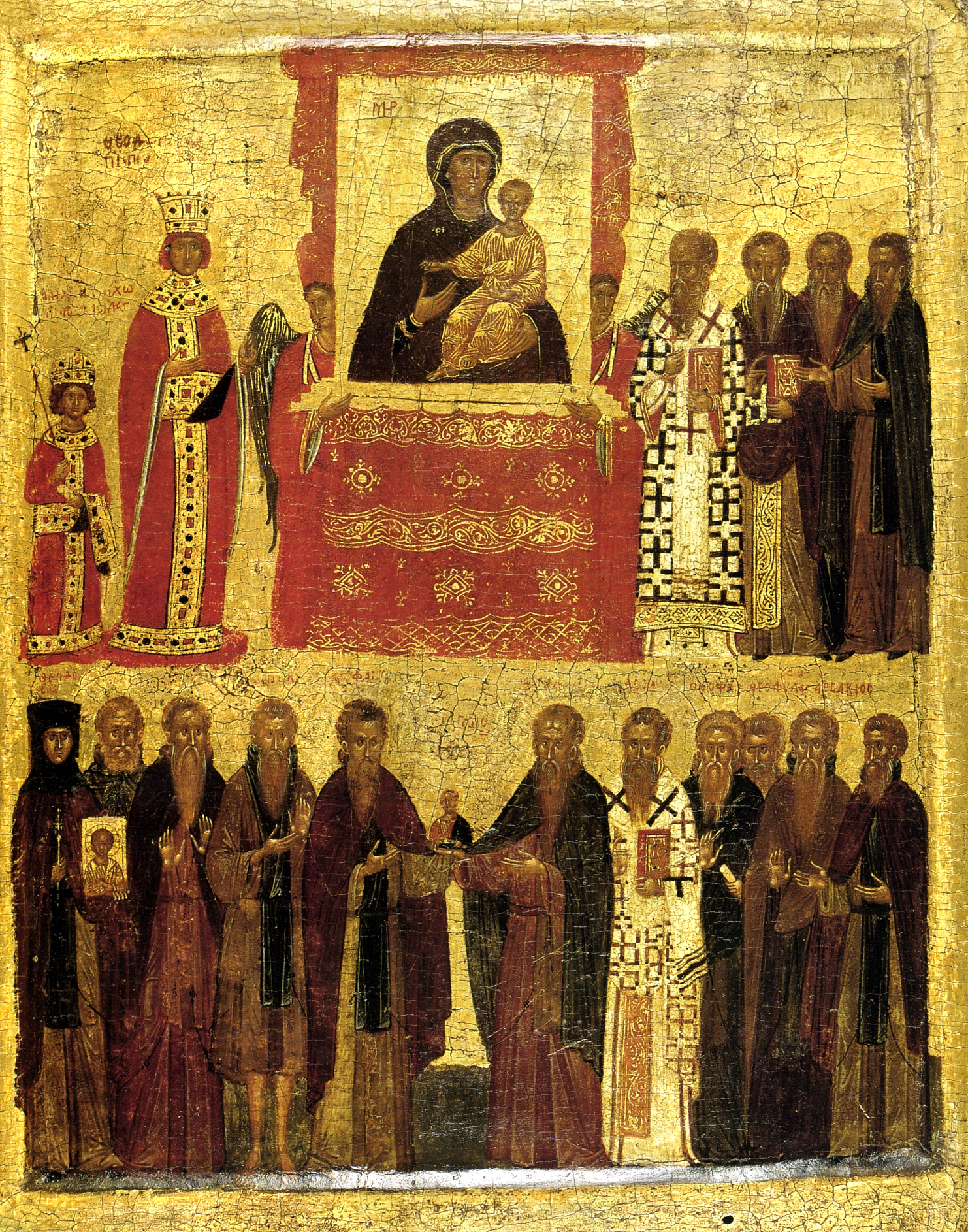|
Aniconism
Aniconism is the cultural absence of artistic representations ('' icons'') of the natural and supernatural worlds, or it is the absence of representations of certain figures in religions. The prohibition of material representations may only extend to a specific supreme deity, or it can encompass an entire pantheon, it can also include depictions of a prophet, saints, or sages, or even depictions of living beings and anything in existence generally. It is generally codified by religious traditions and as such, it becomes a taboo. When it is enforced by the physical destruction of images, aniconism becomes iconoclasm. Aniconism has historical phases in both Buddhism and Christianity, though these movements have been largely rejected as Buddha in art, life of Buddha in art, Buddhas and bodhisattvas in art, God the Father in Western art, Holy Spirit in Christian art, the depiction of Jesus, The Trinity in art, and are common. By contrast Aniconism in Islam, Islam has predomin ... [...More Info...] [...Related Items...] OR: [Wikipedia] [Google] [Baidu] |
Aniconism In Islam
In some forms of Islamic art, aniconism (the avoidance of images of sentient beings) stems in part from the prohibition of idolatry and in part from the belief that the creation of living forms is God's prerogative. The Quran itself does not prohibit visual representation of any living being. The ''hadith'' collection of Sahih Bukhari explicitly prohibits the making of images of living beings, challenging painters who "breathe life" into their images and threatening them with punishment on the Day of Judgment. Muslims have interpreted these prohibitions in different ways in different times and places. Religious Islamic art has been typically characterized by the absence of figures and extensive use of calligraphic, geometric and abstract floral patterns. However, representations of Muhammad (in some cases, with his face concealed) and other religious figures are found in some manuscripts from lands to the east of Anatolia, such as Persia and India. Other forms of figurative a ... [...More Info...] [...Related Items...] OR: [Wikipedia] [Google] [Baidu] |
Aniconism In Buddhism
__NOTOC__ Since the beginning of the serious study of the history of Buddhist art in the 1890s, the earliest phase, lasting until the 1st century CE, has been described as aniconic; the Buddha was only represented through symbols such as an empty throne, Bodhi tree, a riderless horse with a parasol floating above an empty space (at Sanchi), Buddha's footprints, and the dharma wheel. This aniconism in relation to the image of the Buddha could be in conformity with an ancient Buddhist prohibition against showing the Buddha himself in human form, known from the '' Sarvastivada vinaya'' (rules of the early Buddhist school of the Sarvastivada):"Since it is not permitted to make an image of the Buddha's body, I pray that the Buddha will grant that I can make an image of the attendant Bodhisattva. Is that acceptable?" The Buddha answered: "You may make an image of the Bodhisattava".Although there is still some debate, the first anthropomorphic representations of the Buddha himse ... [...More Info...] [...Related Items...] OR: [Wikipedia] [Google] [Baidu] |
Iconoclasm
Iconoclasm ()From . ''Iconoclasm'' may also be considered as a back-formation from ''iconoclast'' (Greek: εἰκοκλάστης). The corresponding Greek word for iconoclasm is εἰκονοκλασία, ''eikonoklasia''. is the social belief in the importance of the destruction of icons and other images or monuments, most frequently for religious or political reasons. People who engage in or support iconoclasm are called iconoclasts, a term that has come to be figuratively applied to any individual who challenges "cherished beliefs or venerated institutions on the grounds that they are erroneous or pernicious." Conversely, one who reveres or venerates religious images is called (by iconoclasts) an ''Iconolatry, iconolater''; in a Byzantine context, such a person is called an ''iconodule'' or ''iconophile.'' Iconoclasm does not generally encompass the destruction of the images of a specific ruler after their death or overthrow, a practice better known as ''damnatio memoriae'' ... [...More Info...] [...Related Items...] OR: [Wikipedia] [Google] [Baidu] |
Aniconism In Judaism
Aniconism in Judaism refers to the idea that Judaism forbids the creation of "graven images," commonly understood to mean the prohibition of idolatry and idol worship. While Judaism is a logocentric religion, Jews were not under a blanket ban on visual art, despite common assumptions to the contrary, and throughout Jewish history and the history of Jewish art, created architectural designs and decorations of synagogues, decorative funerary monuments, illuminated manuscripts, embroidery and other decorative or artistic religious items. In a refutation of the belief in an aniconic Judaism, and more generally in the underestimation of Jewish visual arts, modern secular historians believe that the phenomenon is a modern construction, and that "Jewish aniconism crystallized simultaneously with the construction of modern Jewish identities". According to current scholarship, the notion of a total prohibition of figural representation in the Biblical and Hellenistic-Roman periods is unte ... [...More Info...] [...Related Items...] OR: [Wikipedia] [Google] [Baidu] |
Aniconism In Christianity
Aniconism is the absence of material representations of the natural and supernatural world in various cultures. Most denominations of Christianity have not generally practiced aniconism, or the avoidance or prohibition of these types of images, even dating back to early Christian art and architecture. Those in the faith have generally had an active Christian art, tradition of making artwork and Christian media; depicting God the Father in Western art, God, depictions of Jesus, Jesus, Holy Spirit in Christian art, The Holy Spirit, religious figures including Saint symbolism, saints and Prophets of Christianity, prophets, and Christian theology, other aspects of theology like The Trinity in art, The Trinity and Hand of God (art), ''Manus Dei''. There have however been periods of aniconism in History of Christianity, Christian history, notably during the controversy of the Byzantine iconoclasm of the eighth century, and following the Protestant Reformation of the 16th century, when C ... [...More Info...] [...Related Items...] OR: [Wikipedia] [Google] [Baidu] |
Depictions Of Muhammad
The permissibility of depictions of Muhammad in Islam has been a contentious issue. Oral and written descriptions of Muhammad are readily accepted by all traditions of Islam, but there is disagreement about visual depictions. The Quran does not explicitly or implicitly forbid images of Muhammad. The hadith, ahadith (supplemental teachings) present an ambiguous picture, but there are a few that have explicitly prohibited Muslims from creating visual depictions of human figures. It is agreed on all sides that there is no authentic visual tradition (pictures created during Muhammad's lifetime) as to the appearance of Muhammad, although there are early legends of portraits of him, and written physical descriptions whose authenticity is often accepted. The question of whether images in Islamic art, including those depicting Muhammad, can be considered as religious art remains a matter of contention among scholars. They appear in illustrated books that are normally works of history o ... [...More Info...] [...Related Items...] OR: [Wikipedia] [Google] [Baidu] |
Life Of Buddha In Art
Narrative images of episodes from the life of Gautama Buddha in art have been intermittently an important part of Buddhist art, often grouped into cycles, sometimes rather large ones. However, at many times and places, images of the Buddha in art have been very largely single devotional images without narrative content from his life on Earth. The literary accounts of the life of Gautama Buddha vary considerably in details but are mostly consistent in describing the main events. One of the largest surviving bodies of artistic depictions is the rather small stone reliefs of Gandharan art, beginning in the 1st century BC and continuing for several centuries. These reliefs probably reflected subjects in paintings, both murals and illustrating manuscripts, none of which survive. Their range of about 50 subjects is large, and very rarely exceeded in later art, except in the 120 large reliefs at Borobudor in Java, Indonesia, (but 27 of these are of subjects before his birth); in East Asia ... [...More Info...] [...Related Items...] OR: [Wikipedia] [Google] [Baidu] |
Icon
An icon () is a religious work of art, most commonly a painting, in the cultures of the Eastern Orthodox, Oriental Orthodox, Catholic Church, Catholic, and Lutheranism, Lutheran churches. The most common subjects include Jesus, Mary, mother of Jesus, Mary, saints, and angels. Although especially associated with portrait-style images concentrating on one or two main figures, the term also covers most of the religious images in a variety of artistic media produced by Eastern Christianity, including narrative scenes, usually from the Bible or the lives of saints. Icons are most commonly painted on wood panels with egg tempera, but they may also be cast in metal or carved in stone or embroidered on cloth or done in mosaic or fresco work or printed on paper or metal, etc. Comparable images from Western Christianity may be classified as "icons", although "iconic" may also be used to describe the static style of a devotional image. In the Greek language, the term for icon painting uses ... [...More Info...] [...Related Items...] OR: [Wikipedia] [Google] [Baidu] |
Anthropomorphism
Anthropomorphism is the attribution of human traits, emotions, or intentions to non-human entities. It is considered to be an innate tendency of human psychology. Personification is the related attribution of human form and characteristics to abstract concepts such as nations, emotions, and natural forces, such as seasons and weather. Both have ancient roots as storytelling and artistic devices, and most cultures have traditional fables with anthropomorphized animals as characters. People have also routinely attributed human emotions and behavioral traits to wild as well as domesticated animals. Etymology Anthropomorphism and anthropomorphization derive from the verb form ''anthropomorphize'', itself derived from the Greek ''ánthrōpos'' (, "human") and ''morphē'' (, "form"). It is first attested in 1753, originally in reference to the heresy of applying a human form to the Christian God.''Oxford English Dictionary'', 1st ed. "anthropomorphism, ''n.''" Oxford University ... [...More Info...] [...Related Items...] OR: [Wikipedia] [Google] [Baidu] |
Buddha In Art
Much Buddhist art uses depictions of the historical Buddha, Gautama Buddha, which are known as () in Sanskrit and Pali. These may be statues or other images such as paintings. The main figure in an image may be someone else who has obtained Buddhahood, or a boddhisattva, especially in the various traditions of Mahayana Buddhism. Other Buddhas and bodhisattvas in art have become increasingly common over the centuries, perhaps now outnumbering images of the historical Buddha. In its first centuries Buddhism was largely or entirely aniconic, not showing the person of Buddha except by symbols and relics. This changed, and figures of the Buddha became very common in the art of Gandhara and Gupta art. As forms of esoteric Buddhism developed, other figures from the expanding array of Buddhist sacred persons became more prominent. In Theravada Buddhism this was much less the case, and figures of the historical Buddha remain the most common main images in temples and shrines to ... [...More Info...] [...Related Items...] OR: [Wikipedia] [Google] [Baidu] |
Taboo
A taboo is a social group's ban, prohibition or avoidance of something (usually an utterance or behavior) based on the group's sense that it is excessively repulsive, offensive, sacred or allowed only for certain people.''Encyclopædia Britannica Online''.Taboo. Encyclopædia Britannica Inc., 2012. Retrieved 21 Mar. 2012 Such prohibitions are present in virtually all societies. Taboos may be prohibited explicitly, for example within a legal system or religion, or implicitly, for example by social norms or conventions followed by a particular culture or organization. Taboos are often meant to protect the individual, but there are other reasons for their development. An ecological or medical background is apparent in many, including some that are seen as religious or spiritual in origin. Taboos can help use a resource more efficiently, but when applied to only a subsection of the community they can also serve to suppress said subsection of the community. A taboo acknowledged by a ... [...More Info...] [...Related Items...] OR: [Wikipedia] [Google] [Baidu] |









